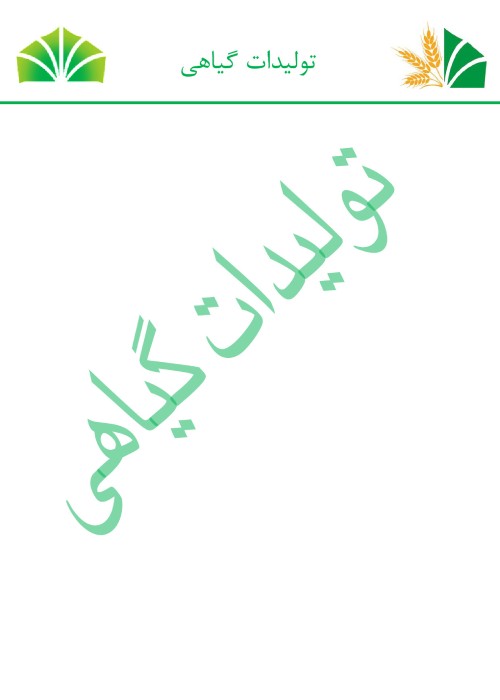optimizing in vitro regeneration of Hypericum (Hypericum perforatum L.)
Author(s):
Article Type:
Research/Original Article (دارای رتبه معتبر)
Abstract:
Background And Objectives
Hypericum perforatum L. (St. Johns wort) has been received considerable interest worldwide due to its biochemical characteristics and unique secondary metabolites. In particular, aromatic polycyclic diones, such as hypericin and pseudohypericin have an interest as their antiviral, anticancer and antidepressant activities. To date, field grown plant material has generally been used for commercial St. Johns Wort production but the quality of these products may be affected by different environmental conditions, pollutants, fungi, bacteria, viruses, and insects which can alter the concentration of medicinal metabolite. In vitro systems have been reported as an effective tool for the development of genetically uniform plants. In order to approach optimal micropropagation of Hypericum perforatum, it will be necessary to optimize shoot proliferation stage in in vitro culture.Material and
Methods
In the present study, in vitro regeneration of Hypericum perforatum L. using different plant growth regulators on MS media has been developed. Callus was induced from leaves and shoots explants of St. Johns Wort on MS medium containing different levels of growth regulator (0, 2 and 4 mg/l BA; 1 and 2 mg/l Kin plus 0.1, 0.2 and 0.3 mg/l 2,4-D) in factorial experiment with completely randomized design in three replication. To shoot induction equal size of formed callus were separated and evaluated on MS media containing BA (0, 0.5 and 1 mg/l) and Kin (0, 0.5 and 1 mg/l). The shoot with terminal node were used on MS media containing IBA (0, 0.2, 0.4, 0.6, 0.8 and 1 mg/l ) to root induction.Results
After 4 weeks callus and shoot/root induction of explants were measured. Data analysis indicated that leaf explants produced higher callus mass than single node explant, also in leaf explants 2,4-D increment had no significant effect on callus mass induction while in single node, callus induction increased as 2,4-D increased. In presence of BA, callus induction from both explants increased with 2,4-D concentration raising. Single node explants produced highest mass of callus in media containing 2 mg/l BA plus 0.1 mg/l of 2,4-D. The highest number of shoots and the longest shoot achieved in presence of 1 mg/l BA with 0.5 mg/l Kin and 0.5 mg/l BA plus 1 mg/l Kin.Discussion
This experiment results revealed that different explants can be used to achieve high regeneration efficiency using different level of growth regulators. Also it seems that external growth regulators isnt essential lin Hypericum branch for rooting. Keywords:
Language:
Persian
Published:
Plant Production, Volume:40 Issue: 4, 2018
Pages:
103 to 113
magiran.com/p1834301
دانلود و مطالعه متن این مقاله با یکی از روشهای زیر امکان پذیر است:
اشتراک شخصی
با عضویت و پرداخت آنلاین حق اشتراک یکساله به مبلغ 1,390,000ريال میتوانید 70 عنوان مطلب دانلود کنید!
اشتراک سازمانی
به کتابخانه دانشگاه یا محل کار خود پیشنهاد کنید تا اشتراک سازمانی این پایگاه را برای دسترسی نامحدود همه کاربران به متن مطالب تهیه نمایند!
توجه!
- حق عضویت دریافتی صرف حمایت از نشریات عضو و نگهداری، تکمیل و توسعه مگیران میشود.
- پرداخت حق اشتراک و دانلود مقالات اجازه بازنشر آن در سایر رسانههای چاپی و دیجیتال را به کاربر نمیدهد.
In order to view content subscription is required
Personal subscription
Subscribe magiran.com for 70 € euros via PayPal and download 70 articles during a year.
Organization subscription
Please contact us to subscribe your university or library for unlimited access!


